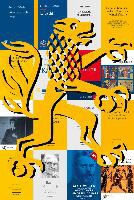Description
Product details
| Authors | Mark W Elliott, Mark W. Elliott |
| Publisher | Mohr Siebeck GmbH & Co. K |
| Languages | English |
| Product format | Paperback / Softback |
| Released | 30.04.2015 |
| No. of pages | 206 |
| Dimensions | 157 mm x 231 mm x 18 mm |
| Weight | 376 g |
| Series |
Studien und Texte zu Antike und Christentum / Studies and Texts in Antiquity and Christianity Studien und Texte zu Antike und Christentum / Studies and Texts in Antiquity and Christianity |
| Subjects |
Humanities, art, music
> Religion/theology
> Christianity
Theologie, Altes Testament, Christentum, Religionsgeschichte, Hebräisch, Geschichte der Religion, Christliche Kirchen, Konfessionen, Gruppen, Religiöse Institutionen und Organisationen, Altes oder Biblisches Israel, Hebräische Bibel, Weltreligionen / Christentum, Israel / Sprache, Ivrit, Judentum / Sprache / Hebräisch, Bibel / Altes Testament, Christentum / Frühchristentum, Alte Kirche / Frühchristentum, Frühchristentum, Altchristlich / Frühchristentum |
Customer reviews
No reviews have been written for this item yet. Write the first review and be helpful to other users when they decide on a purchase.
Write a review
Thumbs up or thumbs down? Write your own review.

